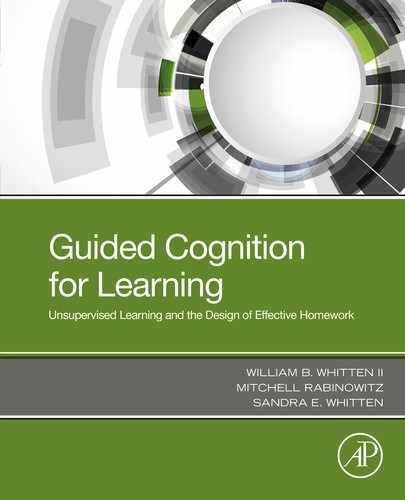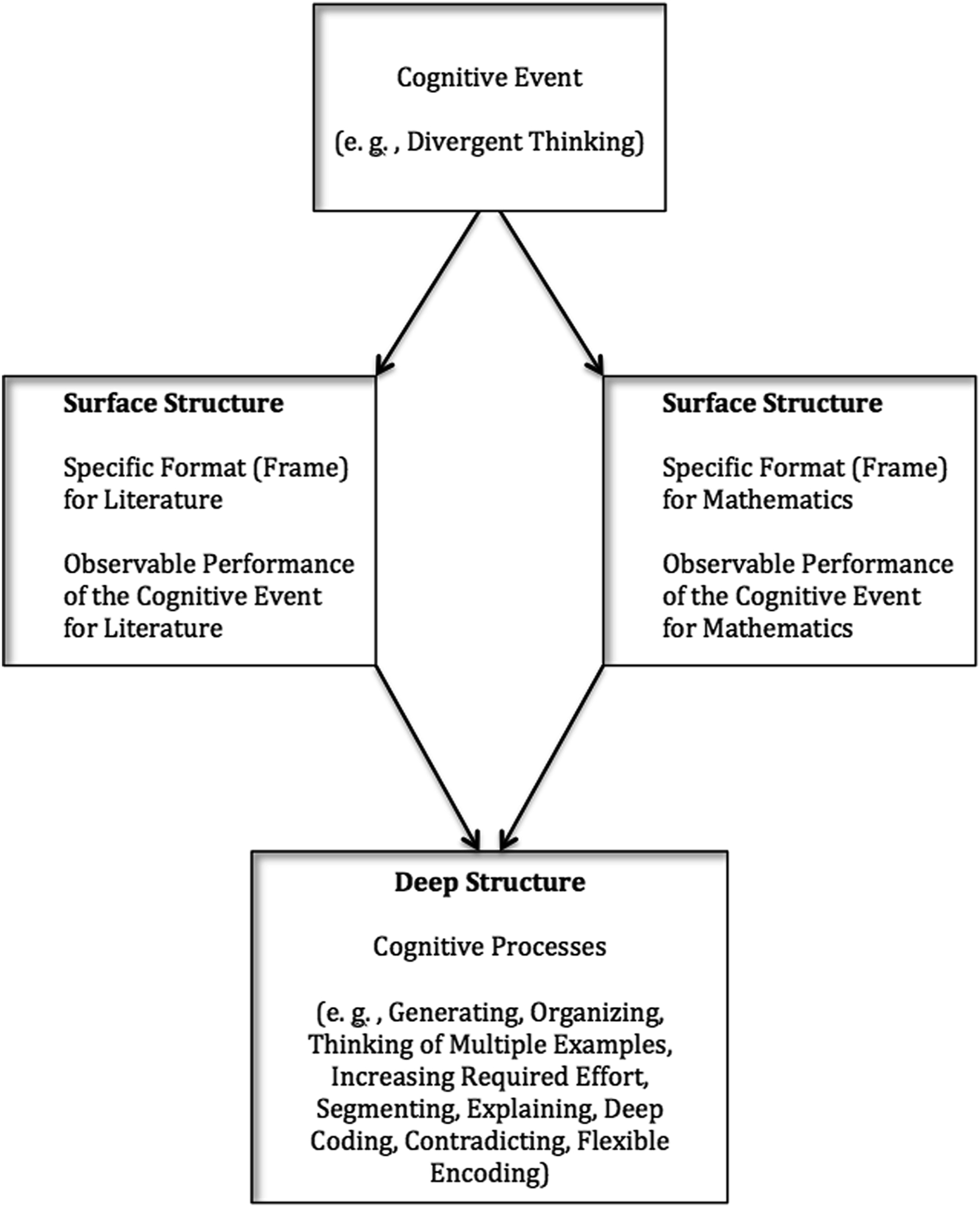Theoretical Considerations
Abstract
This chapter addresses several theoretical questions. The question of how each cognitive event facilitates learning is answered by considering the specific structure and presentation of each cognitive event, creating a framework that lists the individual steps for authoring a particular Guided Cognition homework question, and then using these steps to identify the cognitive processes most likely to be engaged when a student performs a Guided Cognition task. Then, we identified how that cognitive event might facilitate learning, and we have listed the cognitive processes that are most likely to be elicited by each cognitive event. In this chapter, we also explain the relation of cognitive events to various cognitive processes. Then we discuss how, on the surface, a particular cognitive event can appear very different for different content (for example, literature and mathematics) but can actually have very similar underlying cognitive processes that facilitate learning. The observable performance of the cognitive events defines the surface structure of students' study efforts. The elicited cognitive processes constitute the deep structure of students' study efforts. The surface-level expression of particular cognitive events may look different for literature and mathematics, but these cognitive events nevertheless are likely to elicit similar sets of learning-effective cognitive processes for each content area. Whether for literature or mathematics, engaging in these cognitive processes is hypothesized to make the studied content more meaningful and more memorable.
Keywords
How Does Each Cognitive Event Facilitate Learning?
Frame for the Role Play Cognitive Event
Part A
Part B
The Role Play Cognitive Event Could Help With Subsequent:
Interpretation
- • Explaining how to do a specific type of problem enables a student to practice the interpretation of that type of problem and will facilitate subsequent memory for how to interpret such problems.
- • Role playing helps the student identify with and relate more closely to the interpretation: Imagining oneself actively involved in a situation creates a different and memorable perspective, and a closer association with unfamiliar concepts.
Execution
Cognitive Processes Likely Elicited by the Role Play Cognitive Event
Frame for the Relate to Prior Experience Cognitive Event
Part A
Part B
- • Ask the student to tell about a situation like the one in the Part A problem that the student has experienced, read about, or can imagine, where knowing how to perform the mathematics in the Part A problem can help determine an answer.
- • Have the student circle the types of numbers, terms, or other mathematics concepts that are part of the student's problem. (Name these in the instructions to the student.)
- • Tell the student not to work the student's example problem.
The Relate to Prior Experience Cognitive Event Could Help With Subsequent:
Interpretation
- • Authoring an example problem helps the student analyze the structure of the given problem.
- • Relating a problem to prior experience activates the student's prior knowledge and creates a stronger context for understanding.
- • Associations to prior knowledge help the student recall information about this type of problem.
Execution
Cognitive Processes Likely Elicited by the Relate to Prior Experience Cognitive Event
Frame for the Divergent Thinking Cognitive Event
Part A
- • Present a story problem that can be solved using more than one method or procedure, such as with more than one order of steps, more than one way to perform the calculations, etc.
- • Show the student two ways to solve the problem.
- • Ask the student to explain which way might be preferred because of fewer steps, easier calculations, etc.
- • Provide a hint to help the student understand the difference between the two procedures.
- • Tell the student to answer the question by thinking about how to solve the problem, but not to execute the calculations of the problem.
Part B
The Divergent Thinking Cognitive Event Could Help With Subsequent:
Interpretation
- • Divergent thinking helps prevent mechanization by encouraging students to think about the order of operations.
- • Divergent thinking helps students represent the physical properties that constrain the procedures.
- • Divergent thinking encourages students to review and evaluate mathematical procedures.
Execution
Cognitive Processes Likely Elicited by the Divergent Thinking Cognitive Event
Frame for the Visualize and Illustrate Cognitive Event
Part A
Part B
The Visualize and Illustrate Cognitive Event Could Help With Subsequent:
Interpretation
- • Visualizing helps the student practice selecting the important terms and values so that the problem can be accurately represented.
- • Visualizing and illustrating helps the student create a mental model that can transfer to similar materials.
- • Visualizing and illustrating combines visual memory and motor performance to reinforce memory and understanding.
Execution
Cognitive Processes Likely Elicited by the Visualize and Illustrate Cognitive Event
The Relation of Cognitive Events to Cognitive Processes
Surface Structure and Deep Structure of Cognitive Events
Table 6.1


